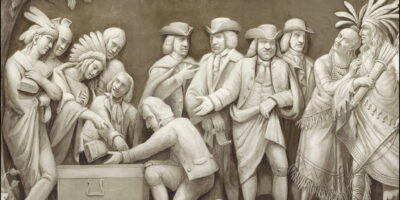The Overuse of the “Roaring Twenties”

Late last week, IMF president Kristalina Georgieva compared the modern era with “roaring 1920s” and criticised wealth gaps in the UK and elsewhere. By this, she was referring to the decade following the First World War which was marked by a rapid rate of economic growth. It also was, so it is believed, accompanied by a rapid increase in inequality.
It all ended badly in 1929 with the onset of the Great Depression. Thus, the “roaring 1920s” is a frequently-used piece of imagery as it invokes the idea of an era of rapid but unequal growth (i.e. rising inequality) that must inevitably end in disaster.
The problem is that this is a gross oversimplification used only for the purpose of hyperbole. It also ends up doing a disservice in discussions of economic policy.
First, the pace of economic growth in the 1920s is not that exceptional.
Second, the extent of the increase in inequality is heavily debated between scholars.
Third, few scholars tie the inequality to the collapse.
Fourth, there are important debates on whether or not the growth of the 1920s was sowing the seeds of its own destruction (i.e. the Great Depression). Once one is aware of what scholars actually versed in the topic discuss, one becomes reluctant to resort to hyperbole.
Do not overstate growth
The 1920s were a period of fast growth by historical standards. Using the Maddison Project from the University of Groningen reveals that decadal trends in growth rates were quite below those observed in the decades prior. The post-war years were indeed a period of rapid growth by a wide margin as can be seen in the table below.
Table 1: Growth rates in US economic history since 1870
| Decade/Period | Growth trend |
| 1870 | 1.24% |
| 1880 | 0.46% |
| 1890 | 1.44% |
| 1900 | 1.85% |
| 1910 | 1.31% |
| 1919-1929 | 2.41% |
| Since 1929 | 2.12% |
However, there are reasons to be cautious with these trends. First of all, there are wide margins of error on the estimates on “true output.” The main reason for this resides in the well-known caveats regarding “unmeasured production” (i.e. household work which is often labelled as non-market production). Normally, as long as unmeasured sectors remain constant relative to the measured sectors, the size of the unmeasured sector has no impact on the measurement of growth rates. However, as Nancy Folbre and Barnet Wagman pointed out, this assumption does not hold. Indeed, using a measure that includes household work and market work, Folbre and Wagman find that the last decades of the 19th century were marked by faster growth than normally estimated. Others, like Paul Rhode, found some minor errors in estimations of output during the decades of the late 19th century. Secondly, as Alexander Field has pointed out, the growth that followed in the decades often (but not always) rivalled that observed during the 1920s. As such, the growth of the 1920s does appear to be important, but it ought not be overstated in terms of its importance.
Do not overstate inequality
More important than the pace of economic growth is the topic of income inequality. The generally-held belief is that the gains from the decade were disproportionately going to the richest. Some went further and argued that living standards for the poorest majority of Americans actually declined.
This needs to be broken in two parts. The first part is that it is clearly untrue that living standards for the poorest fell. As Gene Smiley showed and as confirmed by the data assembled by Simon Kuznets, the lower 93% of Americans experienced income gains during the 1920s. The Kuznets data suggests that the trend in growth suggests an annualized growth rate of 1.2% from 1919 to 1929.
Moreover, these works rely on the “usual” price indexes. Work in the 1990s by Dora Costa suggests that the indexes overstate the extent of inflation. When adjustments are made to improve the measures, we find more growth in real terms than otherwise is the case. As such, the figure of 1.2% above understates the gains to the poorest.
The second part is the extent of the increase in inequality. For long, this depiction of rising inequality was derived from the work of Kuznets. However, Kuznets himself recognized important limitations in his data and about the level of inequality. The most important limitation relates to the source material: tax records. Before the 1940s, tax liabilities were self-reported (i.e. one had to report his own income truthfully). As I pointed out with Phil Magness in an article in Economic Inquiry, this is incredibly problematic because of the fact that enforcement was weak (at best) which means that lies were bound to be reported.
Not only that, but the incentive to lie changed throughout the decade. When tax rates were high and the personal exemption was low (late 1910s, early 1920s), there were strong incentives to lie. When tax rates were reduced and the personal exemption was raised, these incentives lost in importance. As such, low-tax rates years are bound to be more truthful depictions of inequality than high-tax rates years. Phrased differently, reductions in tax rates will cause an increase in the measured level of income inequality but not necessarily an increase in the actual level of income inequality.
This is why, when scholars such as Gene Smiley attempted to adjust for that problem, they found more modest increases in inequality during the 1920s. Whereas Kuznets suggests that inequality increased by 4.6% per year, Smiley finds that it increased less than 2.4%. Moreover, when Smiley excluded capital gains, there were no increases in inequality between 1919 and 1929. In later work that attempts to build upon the work of Smiley and Kuznets, Phil Magness and I show that the 1920s indeed were a decade of rising inequality but the rate of increase was more modest: 1.7% per year (below both Kuznets and Smiley).
No one attributes a root cause of the bust to inequality
However, the measurements for the 1920s are still debated. Even if they were settled in favour of the most pessimistic participants in scholarly debates, inequality plays no role in the bust that finally took place in late 1929. Indeed, none of the participants in that academic conversation tie inequality with the collapse of the economy.
It is true that some scholars argue that certain key policies had the effect of fueling both inequality and an unsustainable boom. However, the increase in inequality was an accident of these policies. In other words, changes in inequality were by-products of the boom-and-bust storyline rather than root causes.
There are wide disagreements on the causes of the bust
The most important claim that needs to be debunked is that the “roaring 1920s” had to end. More precisely, they had to end in an inversely proportional disaster – i.e. the Depression. However, the research on this is hotly debated.
Some scholars argue that there was indeed a boom-and-bust cycle that was bound to end. These scholars cut across the intellectual spectrum. For example, both Murray Rothbard and Barry Eichengreen are found in that camp alongside Eugene White. These three individuals probably represent the sum whole of all possible “schools of thought” in macroeconomics.
Yet, there are also scholars from the same schools of thought who argue that the economic growth of the 1920s could have continued. These include Milton Friedman, Scott Sumner and Ed Prescott. For example, Friedman and Sumner argue that adequate (and mild) monetary policy responses would have prevented the Depression. Some even go further and argue that monetary policy played a minor role and that “real” shocks (such as regulations on labour market) explain the onset of the Depression.
The fact that there are so many different views suggest that it is far from clear whether or not the “bust” was unavoidable. In fact, there are also scholars who tie the initiation of the contraction and Depression to the announcement of the Smoot-Hawley tariffs in 1929. Without the tariffs, they argue, the stock market crash (which then led to stress within the financial sector which in turn translated a financial crisis into an economic crisis – see a variant of this argument here) would not have occurred. As such, the crash was avoidable. Others also believe that while a bust was unavoidable, misguided policies prolonged and accentuated the contraction while also delaying the recovery.
The body of research in economic history in no way suggests the imagery invoked with the “roaring 20s.” There is no reason to believe that the rapid growth of the 1920s had to be matched by a monumental collapse.
Conclusion
The “roaring 20s” is one of those rhetorically useful devices. Just like the “Gilded Age”, it bundles many different claims together in order to generate a powerful image. The problem is that this image is a fiction. In no way does the evidence from the field of economic history support it. Maybe it is politically useful to use it, but it is not historically nor economically accurate.










